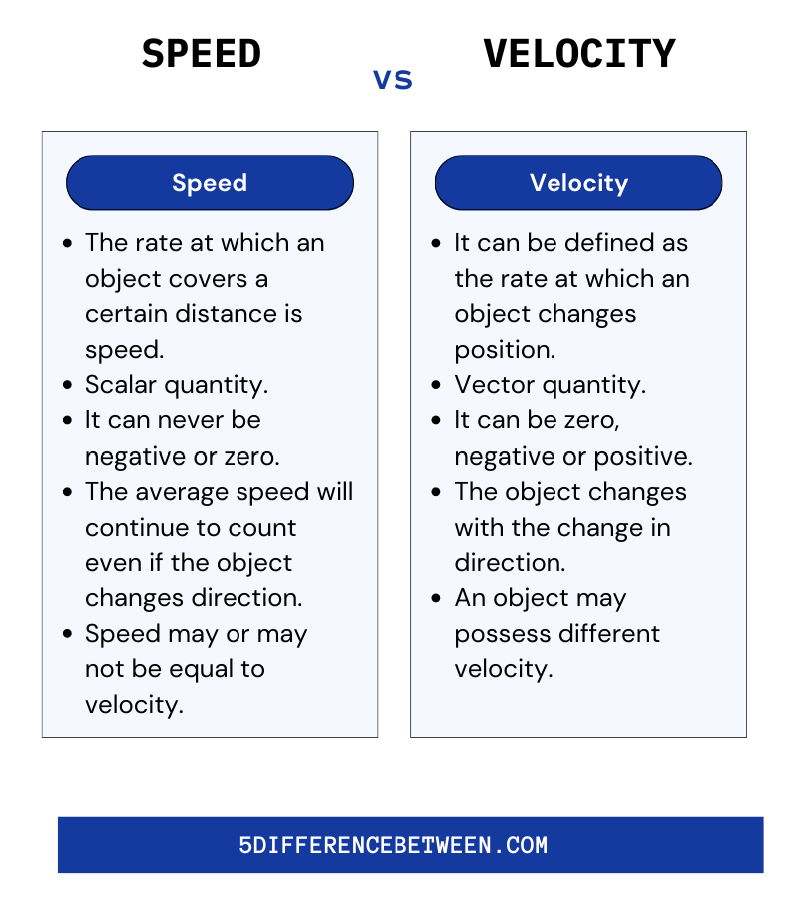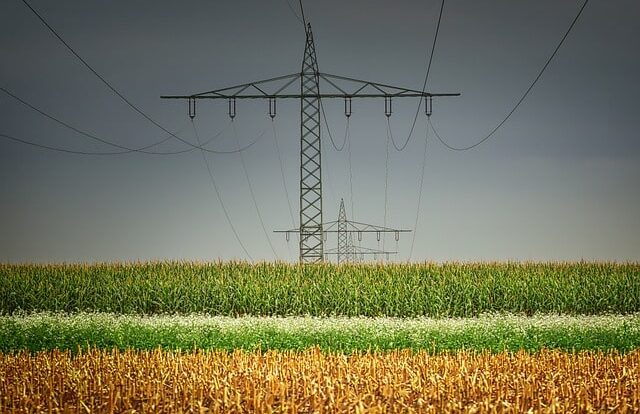Although the terms speed and velocity are frequently used interchangeably, they are not synonymous. Speed is a scalar quantity, which means it can be described completely by a single number, and it is measured in meters per second (m/s). Velocity is a vector quantity, which means it can be fully described by a number and a direction, and it is typically measured in meters per second (m/s) with a direction of motion.
Simply Define Speed
The rate of movement of something is referred to as its speed. Meters per second (m/s), miles per hour (mph), and kilometers per hour (km/h) are the units of measurement. The speed is calculated by dividing the distance traveled by the time required to complete that distance. The concept of speed is important in many fields, including physics, mathematics, engineering, and transportation.
Furthermore, it is used to describe how quickly something moves in a specific direction, as opposed to directionless velocity. Gravity, air resistance, friction, and acceleration can all have an effect on an object’s speed. A car traveling down a hill, for example, gains speed due to gravity, whereas an object traveling up a hill loses speed due to air resistance and friction.
Also Read > Difference Between College and University
Speed is an important consideration when driving. The speed limit for a specific road or area is set by the local government, and drivers must obey the speed limit or face penalties. Drivers must obey the speed limit and be aware of their speed because driving too fast increases the risk of a collision.
From driving to sports to everyday life, speed can be applied to almost any situation. It is an important measure of how fast something moves and is influenced by a number of factors including gravity, air resistance, and acceleration. People who understand and appreciate the concept of speed can travel safely and efficiently.
Simply Define Velocity
Velocity is the rate at which an object’s position changes over time. In physics, velocity is a vector quantity that equals the rate at which an object’s position changes in relation to a reference frame. It is the speed of an object in one direction. Velocity is commonly measured in meters per second (m/s), but it can also be expressed in kilometers per hour (km/h) or feet per second (ft/s). The time it takes an object to travel a given distance at a constant velocity is the same regardless of direction of movement.
Velocity is a fundamental concept in physics that is used to calculate an object’s kinetic energy, or the energy associated with its motion. It is also used to calculate a moving object’s acceleration and power. Velocity is linked to other physical quantities like speed and momentum. An object’s speed is the magnitude of its velocity, whereas its momentum is the product of its mass and velocity. Velocity is a fundamental concept in many engineering disciplines, including aeronautics, automotive engineering, and robotics. In aeronautics, velocity is used to calculate lift and drag forces on an aircraft as well as to measure its speed relative to the air. In automotive engineering, velocity is used to calculate an engine’s power and torque. In robotics, velocity is used to calculate a robot’s acceleration and deceleration.
Velocity is also an important concept in mathematics, where it is used to calculate a function’s rate of change. Velocity is used in calculus to compute derivatives and integrals. Vector fields are calculated using velocity in vector calculus.
What are Velocity Vs Speed Examples?
It is also necessary in sports. Athletes must train to increase their speed because it is necessary in many sports such as running, swimming, and cycling. Athletes can achieve their goals more quickly and easily by increasing their speed.
Velocity is used in computer graphics to calculate motion blur particle systems. Velocity is a vector quantity that represents the rate at which the position of an object changes in relation to a reference frame. It is a fundamental concept in physics, engineering, and mathematics that is used to calculate a moving object’s kinetic energy, acceleration, power, and momentum.
Speed Vs Velocity

Speed is a scalar quantity that represents the rate at which an object moves in a specific direction, whereas velocity is a vector quantity that represents both the rate and direction of motion of an object. In other words, speed is the magnitude of velocity. As a result, velocity is defined as the sum of speed and direction. As a result, velocity is a subset of speed.






